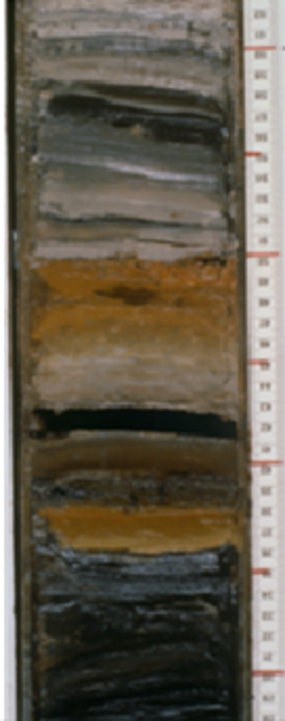Core Sampling
What is ocean core sampling?
Core sampling involves collecting samples from the marine subsurface using a corer to obtain a cylindrical piece of sediment called a core sample.
In other words, it is a tubular piece of sedimentary material which provides a “vertical” sample.
What does it tell us?
The layers of a core sample are a source of much information in various fields of research, including local and global climatology, present and past geophysics, biology, plate tectonics, as well as terrigenous deposits, fluvial deposits, etc.
What types of corers?
Depending on the objectives of the coring operation, and in particular the size of the sample, various types of machine are used: box corers and tubular corers. The former employ square buckets while the latter have short tubes which sample the upper layers of sediment down to a depth of one metre.
Samples deeper than one metre require the use of a gravity corer. This device features a weighted tube which penetrates the sediment at a speed determined by the cable lowering it. Deeper penetration into the sedimentary layers, while maintaining as much as possible the integrity of the sample, requires the use of Kullenberg-type corers. This type of corer is the basis for the development of the much-larger Calypso corer.
How does the Calypso corer work?
The Calypso corer comprises a tube of up to seventy metres long combined with a hollow weight of several tonnes. The lower part of the tube features a piston connected to the winch cable, above the corer, via a cable which runs freely inside the tube and the weight. The corer is held in position as it descends by a trigger weight. When the tube is approximately 1.5 metres above the water-sediment interface the trigger makes contact with the seabed and releases the corer, which free-falls into the sediment. The tubes penetrate the sediment and the piston, held back by its cable, remains static and slides, therefore, inside the falling tubes. Similar to a syringe, this creates a vacuum which helps to overcome the friction between the sediment and the inside of the core liner which would otherwise be generated. Once the tube has completed its fall, the piston butts up against the weight and the sediment core sample can then be extracted from the seabed and winched aboard. A secondary tube, called the core liner, is withdrawn from the main tube and the sedimentary layers it contains are then cut into 1 m to 1.5 m sections for storage and study.
What happens to the cores?
How are they analysed?
The cores can be studied in numerous ways. The most basic and simplest way is to undertake the visual description of the layers in order to determine the nature of the sediments. To do this, the core is cut in half lengthways using a suitable machine. For more geophysical details, a very commonly used device is the Multi-Sensor Core Logger (MSCL). This type of machine is often built into a containerized laboratory for use at sea. The core sample passes through the machine’s sensors which log information such as density, magnetism, wave velocity, spectrocolorimetry, etc.
There are also X-ray machines, magnetic field meters which give more detailed measurements than the MSCLs, and other devices.
The last option is to take material directly from the core sections and subject it to numerous laboratory studies. To do this, the core sample is cut in half lengthways. One half is used for the direct and more or less destructive studies, while the other is archived for future study.
Where are the cores stored?
Sediment cores need to be stored in a cool place, generally around 4 °C. Some laboratories have core libraries. These vast refrigerated hangars are maintained at a stable temperature and feature special racks for storing the fragile and very precious cores.





